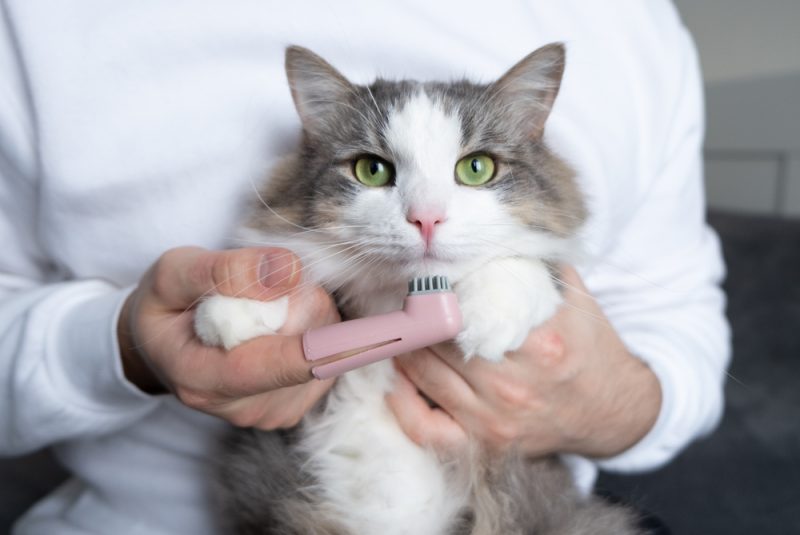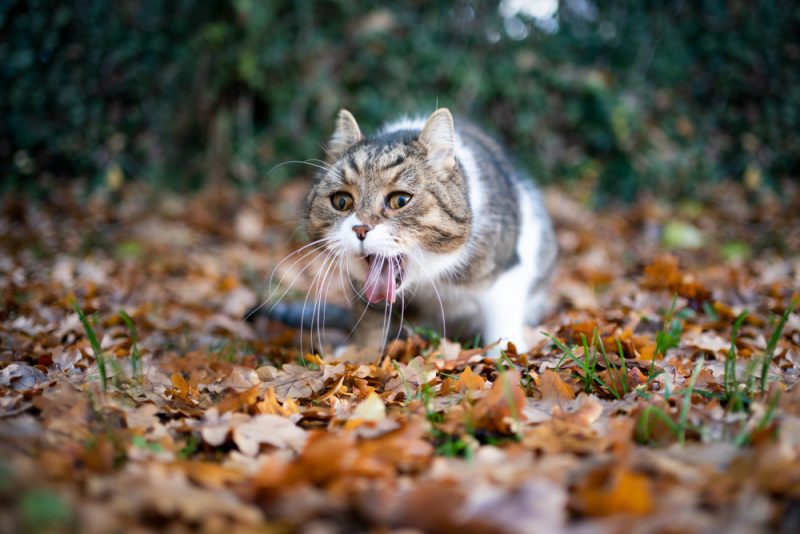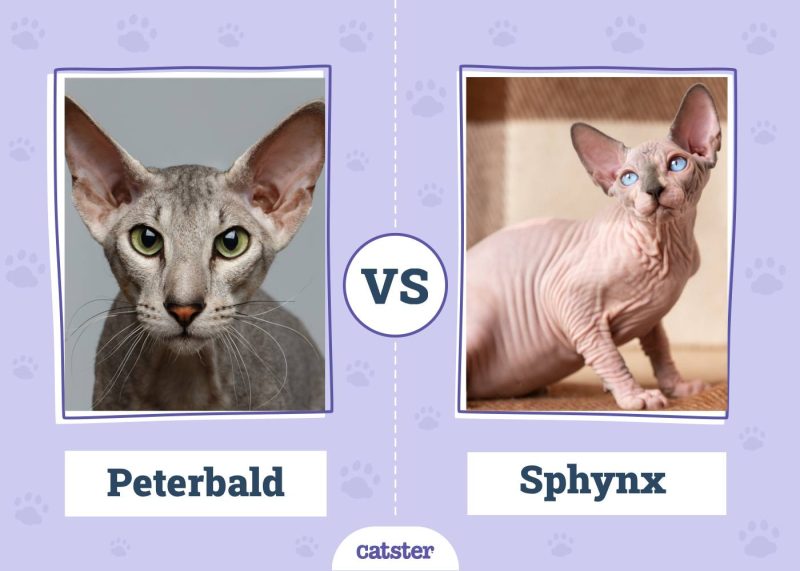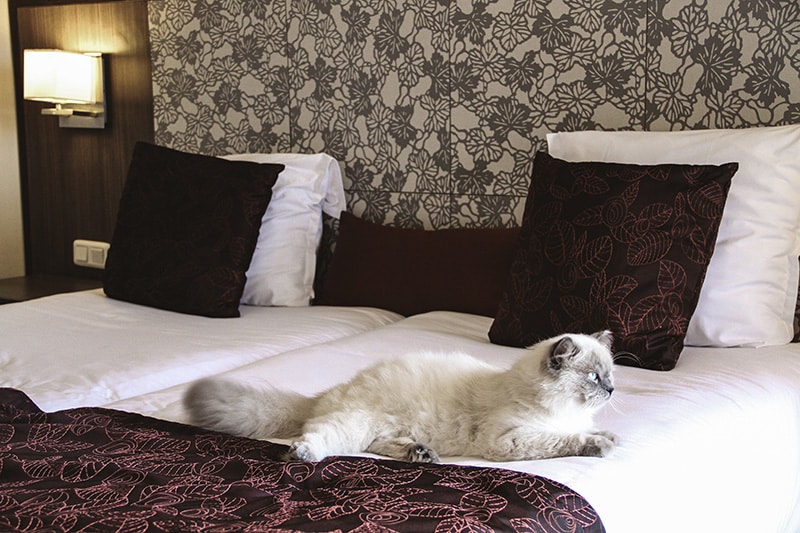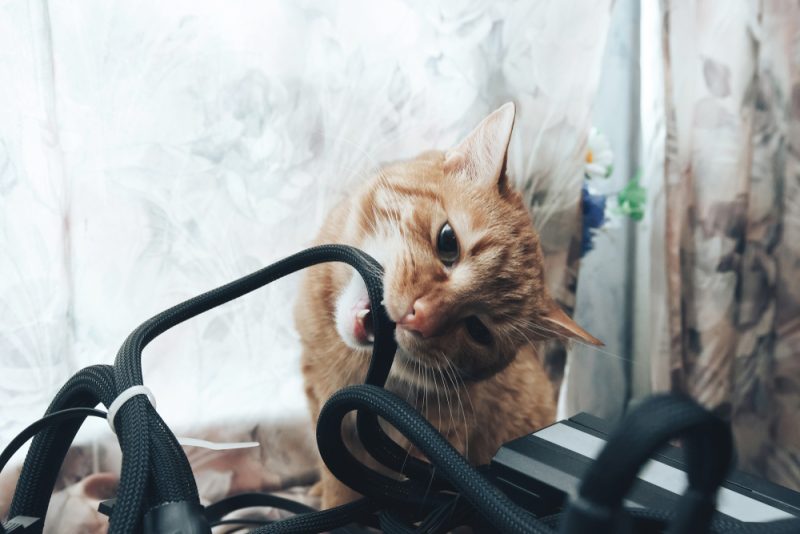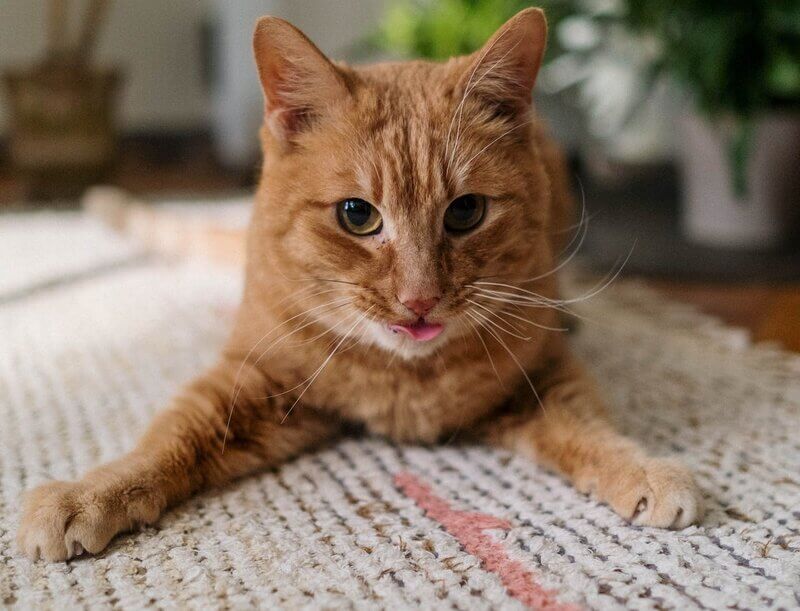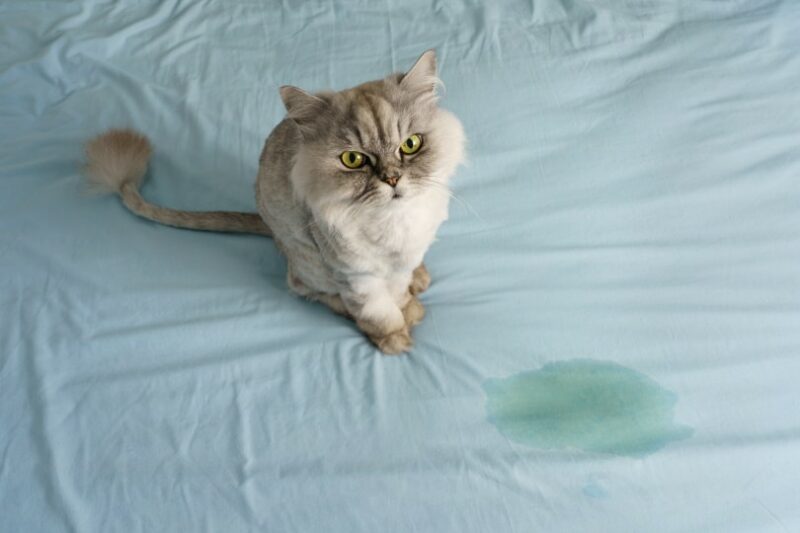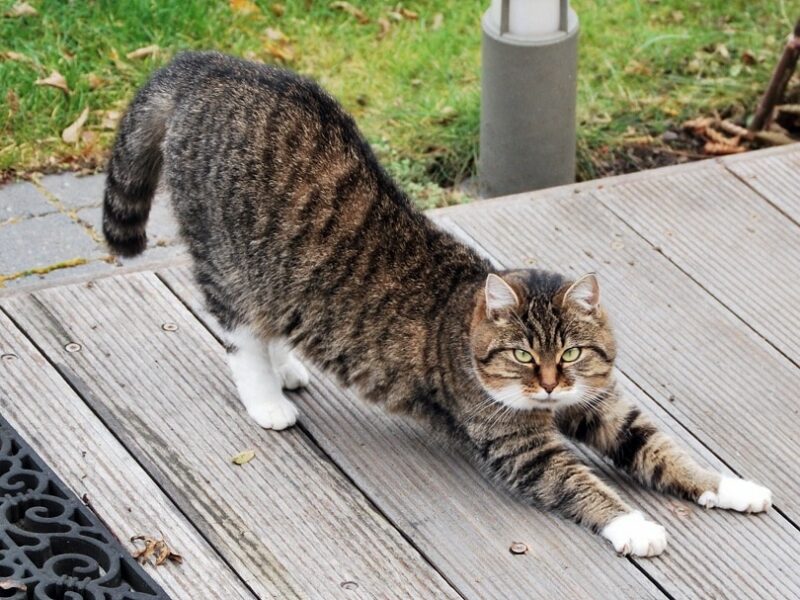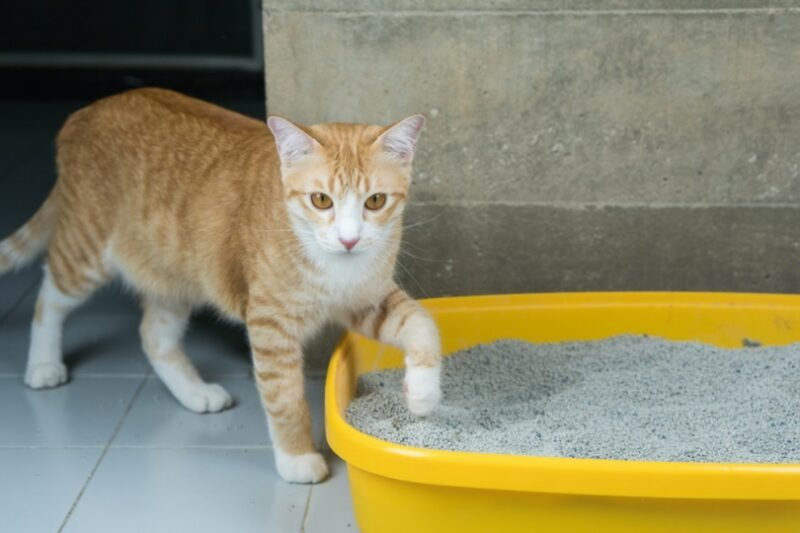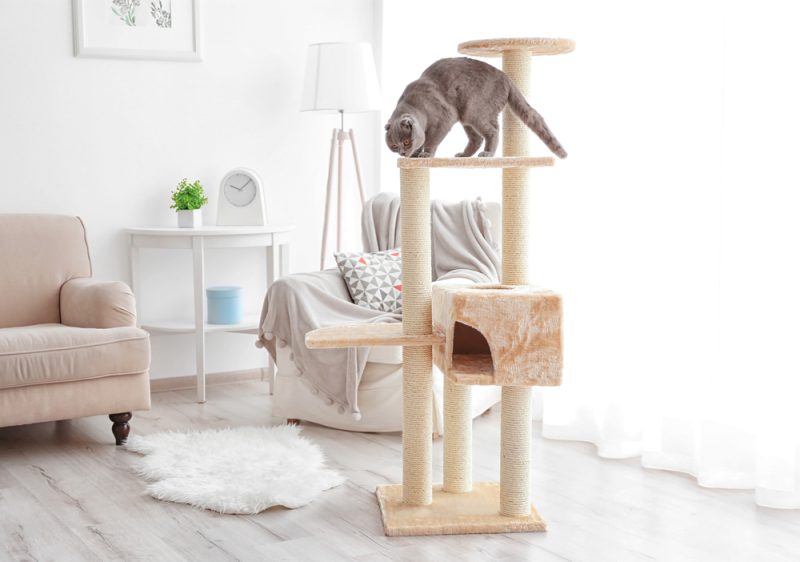Dental disease is incredibly common in domestic cats, with experts estimating that between 50%–90% of cats over the age of 4 years old have some kind of dental disease. The good news is that most of these diseases are preventable by keeping up a regular routine of brushing your cat’s teeth.
If you’re not sure how to start keeping your cat’s teeth clean, check out our step-by-step guide with videos!

What You’ll Need
Before you start brushing your cat’s teeth, make sure you have everything that you need, including:
- These come in a variety of different options, including finger brushes, regular toothbrushes, and dual-ended toothbrushes. You may need to experiment with a few different options to see which one suits your cat best. Always remember to use a separate toothbrush for each cat to avoid cross-infection.
- Toothpastes for cats are available in a range of different flavors, including poultry, beef, and seafood. Again, you may need to experiment to see which one your cat prefers.
- Dental treats. Some cats will love getting a few treats after they’ve had their teeth brushed, and this is a great way to reward them for good behavior. Using a dental treat means you’re helping their teeth stay healthy and clean at the same time!

The 7 Important Steps for Brushing Your Cat’s Teeth
1. Start as young as possible
The earlier that you train your kitten to accept having their teeth brushed, the easier it will be to build this into their regular routine. The following steps can be used with cats of any age, though!
2. Get your cat used to the toothpaste
The first thing to do is to acclimatize your cat to the taste of the toothpaste. Place a small amount of toothpaste, about ¼ of a centimeter, on your finger and allow your cat to sniff it. Most will be attracted by the scent of the toothpaste and will happily lick it off your finger. If they’re not sure, put a tiny amount on your cat’s nose, and they should give it a lick. This stage is simply getting your cat used to the flavor of the toothpaste.
3. Start Desensitizing Your Cat to Allow Handling
It’s best to start practicing this step while your cat is relaxed and make sure you avoid startling them. Start standing or sitting behind your cat, and place your hand on the top of your cat’s head. Move your fingers and thumb so they sit gently on your cat’s cheekbones, just behind their eyes. See if you can tilt your cat’s head back and pull their upper lip on one side upward with your thumb. With your free hand, pull down their lower lip so you can see all their teeth.
You may need to build up to this in stages, depending on your cat’s temperament. Remember to give them plenty of treats and praise!
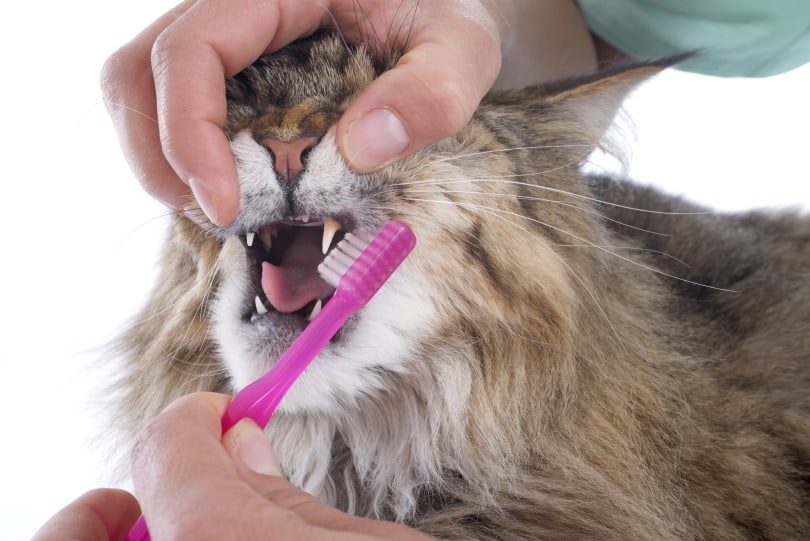
4. Add a small amount of toothpaste
Next, you’re going to work on adding cat specific toothpaste, but without a brush. Use a cotton bud to place a small amount of toothpaste on your cat’s teeth and rub it in. Hold their head and pull their lips back, like you’ve been practicing.
You may need someone to hold your cat’s front paws or wrap your cat in a blanket. If they resist, simply keep repeating Step 3 until they’re completely comfortable.
5. Start using the toothbrush
Once your cat is comfortable with Step 4, you can add in using the toothbrush instead of the cotton bud. Start brushing for just a couple of seconds on each side, and then gradually work up to longer sessions until you can get all their teeth brushed on each side.
This video can help you figure out how to brush your cat’s teeth:
6. Ask a vet for help
If, at any point, you’re having trouble or your cat is resisting, ask if you can bring your cat to the vet clinic. Seeing your vet demonstrate how to clean your cat’s teeth may help you work out the best techniques to use.
If you need to speak with a vet but can't get to one, head over to PangoVet. It's an online service where you can talk to a vet online and get the advice you need for your pet — all at an affordable price!

7. Repeat!
Aim to work up to brushing your cat’s teeth once per day. You may start with just one session a week and build up to daily sessions.

Don’t Forget Professional Teeth Cleaning Too!
Even if you do the best job brushing your cat’s teeth at home, they may still need a professional cleaning once a year. Your vet will do this under anesthesia. After excessive plaque is removed, it’s much easier to maintain your cat’s teeth at home.
Related Reads:
- My Cat’s Grinding Their Teeth — Should I Worry? (Vet Answer)
- Am I Supposed to Brush My Cat’s Teeth? Here’s What You Need to Know!
Featured Image Credit: Kashaeva Irina, Shutterstock
